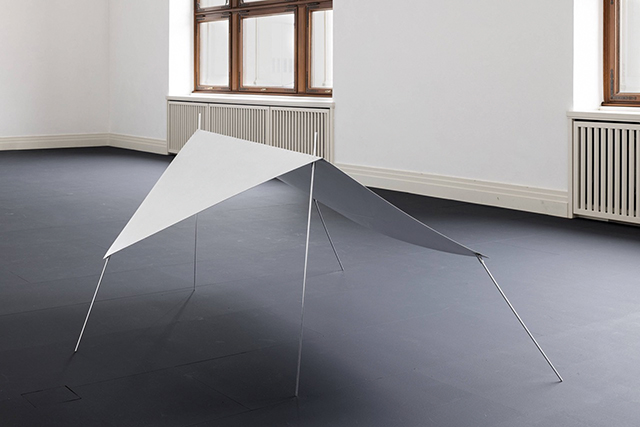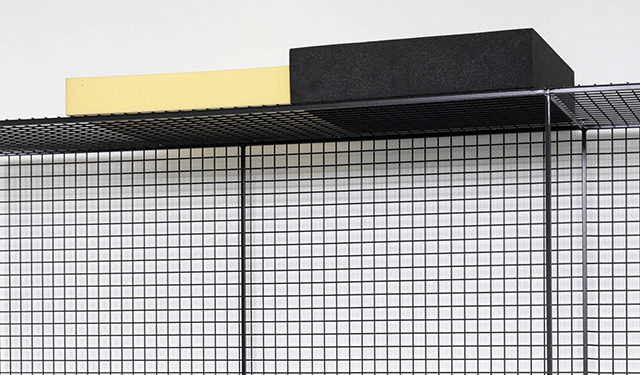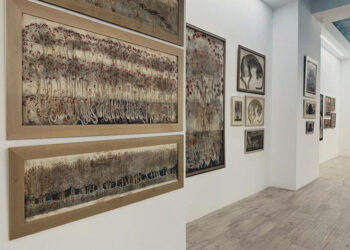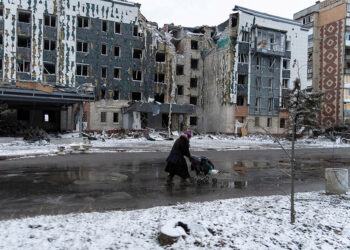In her current exhibition at the Schliemann Hall of the Gropius Bau Museum, Thea Djorjadze’s displayed works serve as indications in themselves of the artist’s creative process. The connection between the representative spaces of a museum and the intimacy of the artist’s studio analyzes the exhibition situation within an institution. Remnants and remains of studio experiments side by side with works created for the show, among them forms, models and casts, question the process of display. Varying from glossy and shining to raw and obliterated, they serve as decorative elements recording the work process.
Occasional references to painting cause tension between representation, reality and replication. Their temporal arrangement calls for the intensification of attention to process, as well as Thea‘s sensitivity to her own subjectivity articulated in the course of this process. Forms imitating pedestals, gallery fixtures, grids and supports, normally hidden from the public eye, have here a special role: They are traditional elements of presentation, parts of the presentation apparatus, yet at the same time they serve here as sculptures in themselves, shaped by the rules of institutional conditions that the artist thematizes.

Thea Djorjadze explores the exhibition space as a kind of frame. She addresses among others the problem of authorship, which is no longer assumed, as obvious but referred to in the artistic process and assuming part of the meaning. As, for example, a trace that she cautiously leaves in the room, some casual autobiographical charger reflecting the context in which the artist is situated at the moment. The works mostly have a character of something unfinished and fragmentary, with spontaneity bearing likeness to touch and improvisatory playfulness, game and experiment.
Djorjadze analyzes exhibition spaces as something always mediated by economic and ideological interests that inevitably refrain and re-define the production, the reading and the visual experience of the artistic object; a confrontation between museum architecture and sculptural work piercing the space. She attempts to recontextualize works of art with their claims of autonomy, questioning the neutrality of the works of art with their socio-economic and ideological underpinnings, as well as exhibition policies. The exhibition is curated by Julienne Lorz.
Review by Lily Fürstenow-Khositashvili














